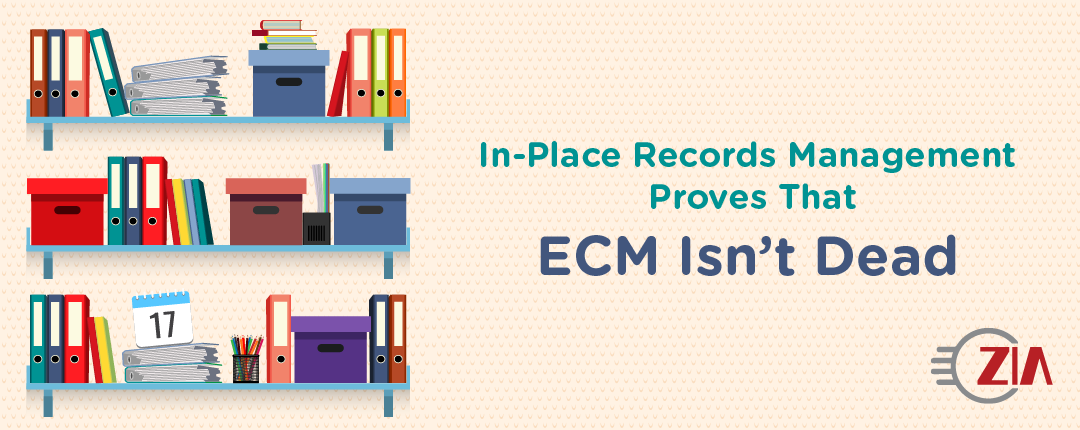Some content management analysts will tell you that “ECM is dead.” While that sounds dramatic, it only means that the promise of having one ECM system to rule them all doesn’t deliver. Recently, Zia Consulting proved the concept of “Manage In-Place” records management—now, you can use one records management platform to house all of your records and documents in their current repository like Sharepoint, IBM FileNet P8, or Alfresco, to name a few.
So, how do you apply records management to multiple content repositories? Until recently, you’d purchase a content management module from each vendor—all of which would have different user interfaces and experiences—and attempt to apply your records management schedule and policies. This is expensive, confusing, time-consuming, and most of all, risky. Records management mistakes are typically costly to your company, especially when litigation is involved.
We worked with a large, U.S.-based life insurance company for several months on a Manage In-Place proof of concept. Zia enabled the Alfresco Records Management solution to allow the company’s records department to apply their retention schedules for automatic destruction of records after a prescribed period of time by document type.
The challenge with this customer started when a huge analyst firm told them that the concept they wanted to achieve (Manage In-Place) wasn’t possible. Zia responded to their RFP and went to work. Zia utilized several different technologies in their response including Alfresco Records Management and the “secret sauce,” Simflofy. Combining Simflofy’s federation tools with Alfresco Records Management, the system “stubs the record” in the repository where it resides. This essentially changes the metadata and permissions of the document. In this circumstance, we designed our solution to work with IBM FileNet P8 and Sharepoint.
Zia configured several workflows for record review. This results in a solution allowing for one user interface to manipulate the records in the repository of origin. Record managers now only interact with one system to add or change their retention policies. For many customers, this allows them to finally tackle records management in the first place. Before, they would “roll the dice” because the problem was too much of a behemoth to tackle.
Applying basic records management principles can save your organization thousands (if not millions!) of dollars in litigation and fines. Don’t hesitate to contact us for more information on a solution for your organization today.

